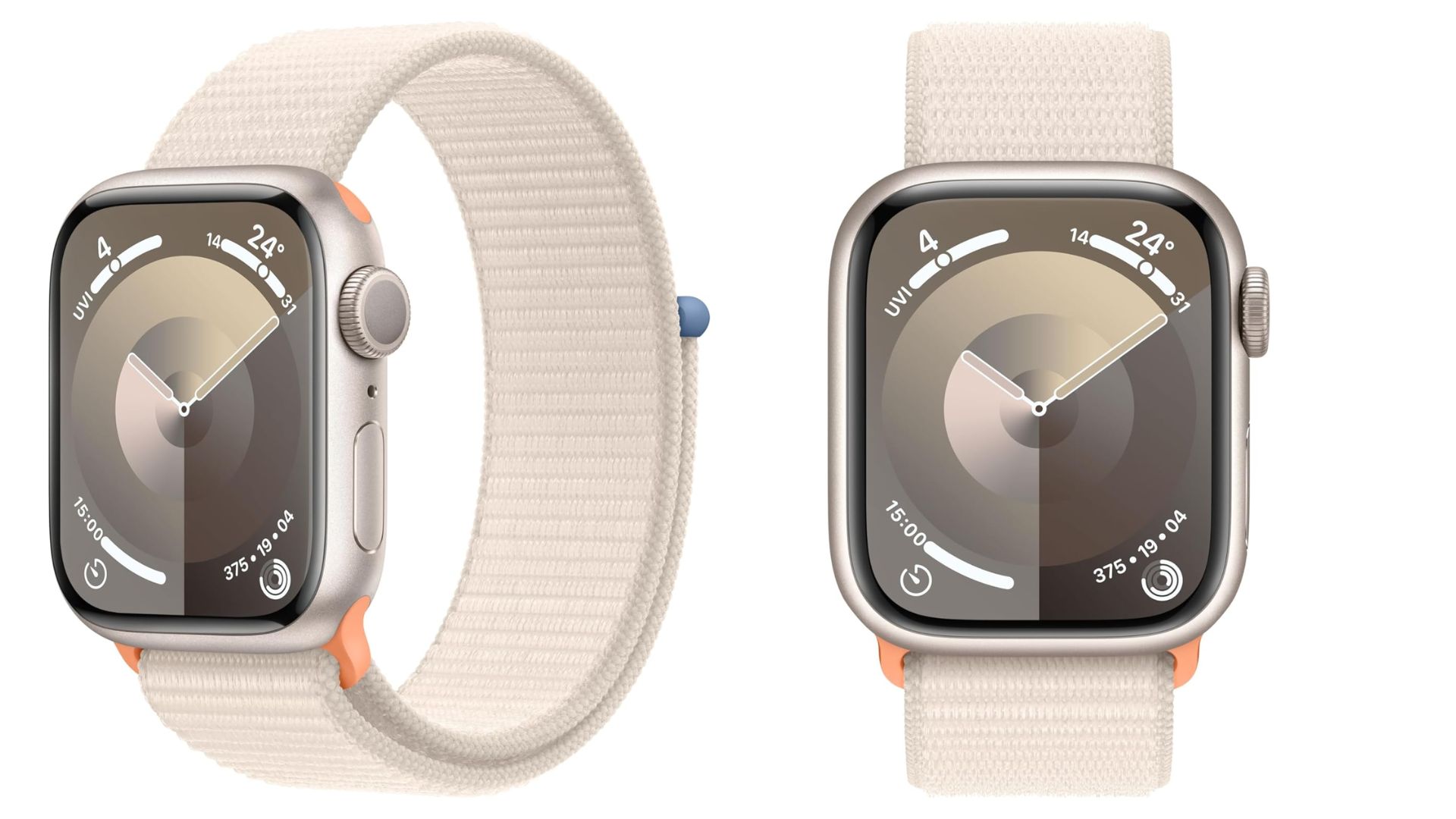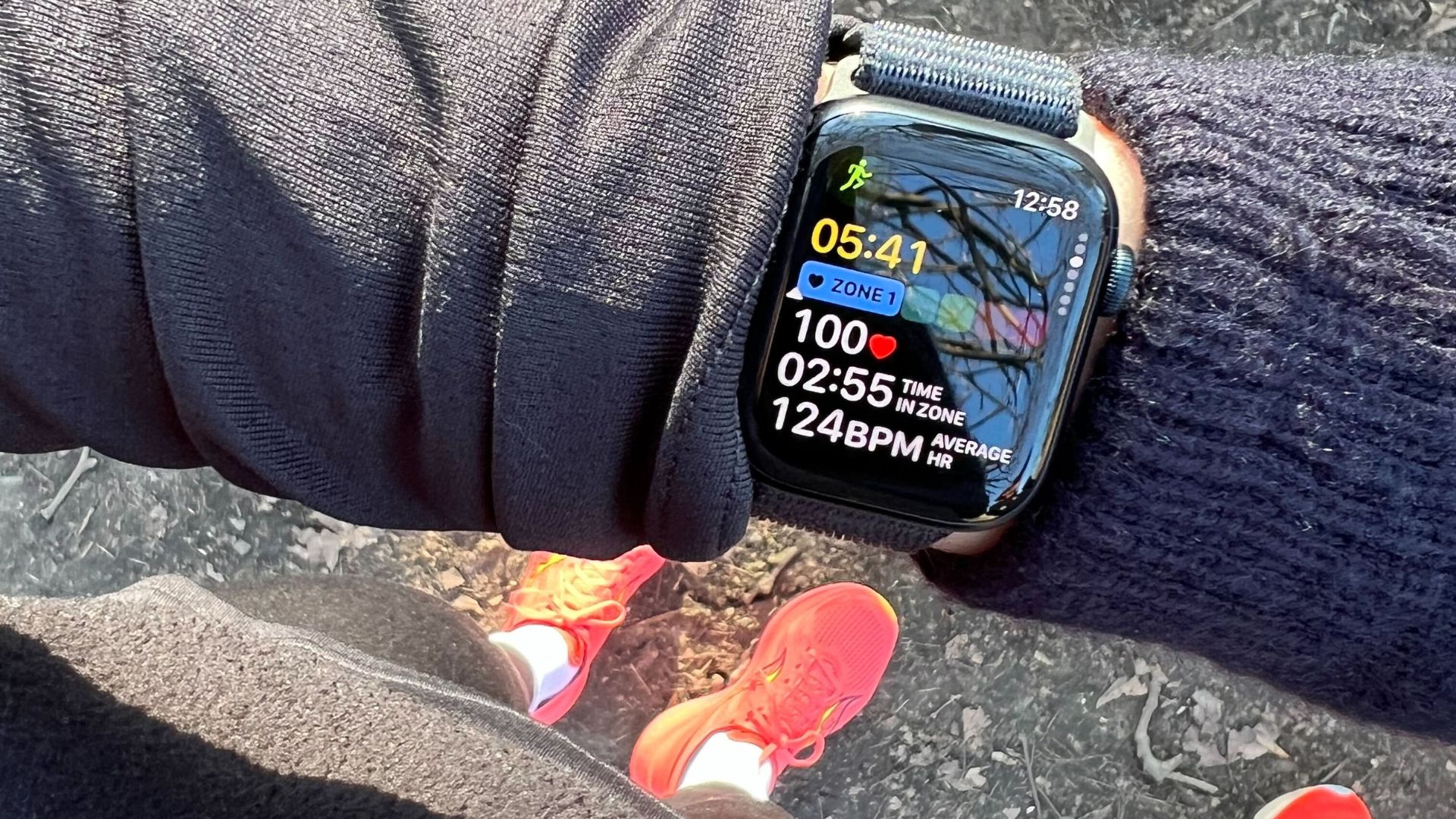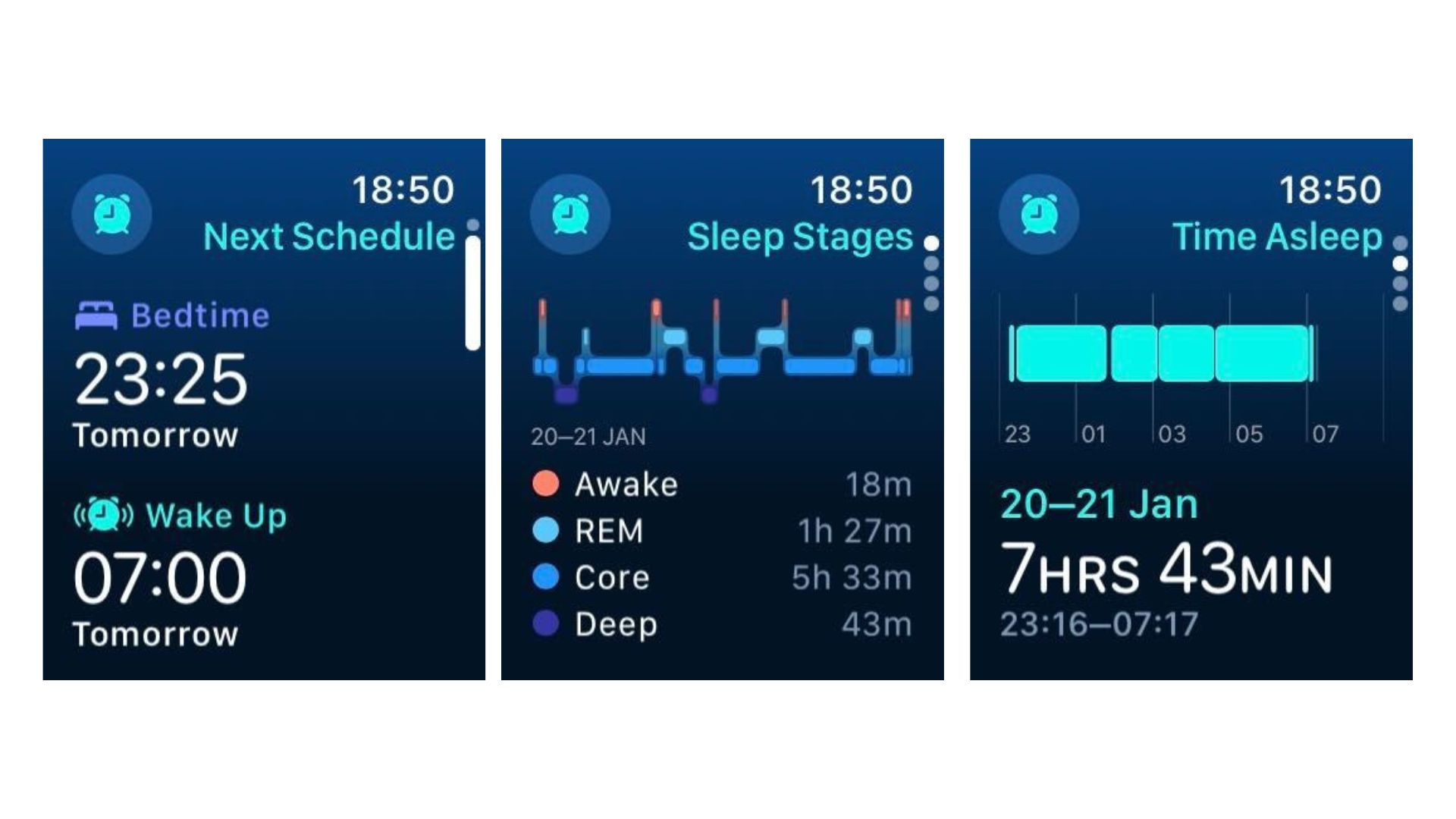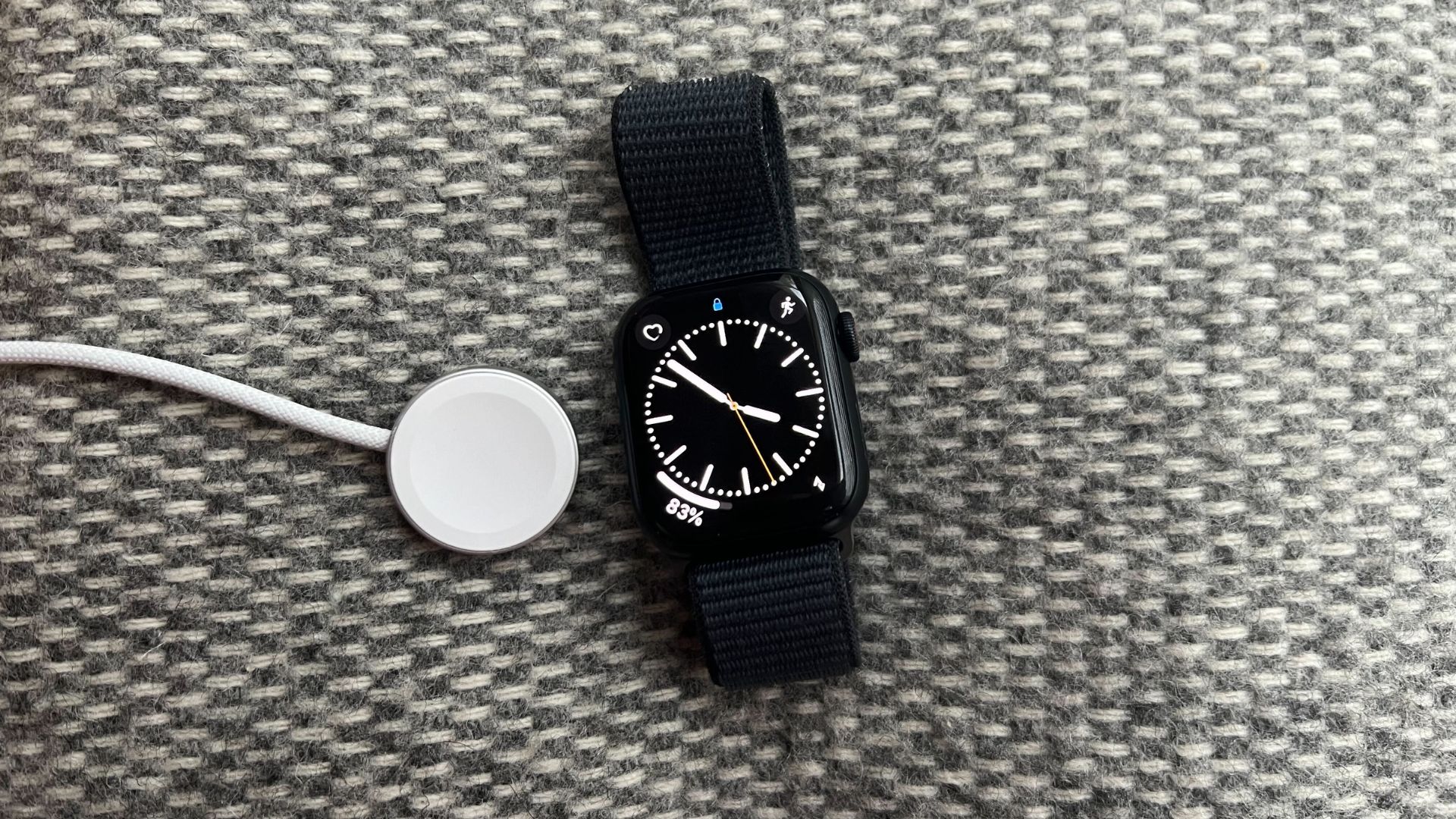
The new year has begun and with health goals taking the top spot in many resolutions lists, there's truly been no better time to invest in a new smartwatch - bring in the Apple Watch Series 9.
Like many people, I'm always looking to better understand and improve the main pillars of my health: nutrition, fitness, sleep, and stress. If I can do this while making my day-to-day life easier with a pick of the best fitness trackers, even better.
As woman&home's digital health editor, a keen runner, cyclist, and gym-goer, I was excited to take the Apple Watch Series 9 for a spin. I used the device consistently for two weeks to see how it measured up, wearing it throughout the day, overnight, and during all my exercise activities.
Apple Watch Series 9: An overview
The Apple Watch Series 9 is one of the top smartwatches around today - a hard title to give, considering all the options available from both the brand and competitors. However, what sets the Apple Watch Series 9 apart from the others is the new seamless lifestyle and activity integration features. If you want a watch that can assist you through life - whether that's making and receiving phone calls and messages or taking a picture - as well as one you can use for advanced monitoring of your health and fitness, this is a great option.
The limited battery life of previous models remains a problem but new features, such as the Double Tap, a faster processor, and on-wrist Siri, help to create this new and improved watch.
Apple Watch Series 9: Specifications
- RRP: From £399
- Size: 41 x 35 x 10.7 (41mm option) or 45 x 38 x 10.7 (45mm option)
- Weight: 32.1g (aluminium)
- Material: Aluminium or stainless steel casing with a variety of bands available
- In-built GPS: Yes
- Battery life: 18 hours
- Waterproof: No - swimproof only, up to 50m
How much does the Apple Watch Series 9 cost?
The Apple Watch Series 9 is available to buy now with an aluminium casing from £399 or in a stainless steel casing from £699.
In both cases, this is the price of the 41mm option, although the watch does come in a slightly larger 45mm size for additional cost - from £429 in aluminium and from £749 in stainless steel.
You can also buy the watch with two connectivity choices: GPS (the cheaper option, but you'll always need to have your phone nearby to make/receive phone calls and messages, but you can use the GPS function without your phone) and GPS + Cellular (the more expensive option, where you can link your cellular data plan to use the watch on its own as a stand-in phone).
The band you choose for your Apple Watch also makes a difference to the price. Opt for sweat-resistant rubber or eco-friendly textile materials and you'll pay upwards of £499 but opt for a stainless steel band (Milanese loop or Link Closure) and the price tag could go up to as much as £749.
The lowest price you'll be able to buy the Apple Watch Series 9 for is £399 - with an aluminium case (in your choice of colour), at 41mm, with GPS connectivity, and a textile or rubber band - direct from the retailer.
Design of the Apple Watch Series 9
In my mind, the Apple Watch has always - ever since its first release in 2015 - scored big points for design. It's one of the only smartwatches or fitness trackers that can slip seamlessly between work and play, without users even having to change the wristband. The Series 9 is no different with its sleek, curved edges elevated slightly from the wrist, rotating Digital Crown, side button, microphone, speaker, and two size options. It even weighs the same as the previous model with a truly lightweight feel that makes you forget you're even wearing it.
There are colour options from across the spectrum. Fans of quiet luxury will be happy to see the Midnight (black), Starlight (gold), and Silver colour options back for the casings and bands, while the maximalists among us will love the red and pink options, complete with equally loud band choices. Truly something for everyone. If you're looking for an Apple Watch that reinvents the brand's finely crafted wheel, this isn't it.
However, some minor elements of the design have changed. Moving into a new era, Apple has released the Series 9 with eco-friendly credentials behind it. Recycled materials are used both inside and outside the watch, with new textile band options made from 82% recycled tarn. Some versions of the Sport Band also now have a textured feel with unique speckle designs in each one thanks to the recycling process. It's an unexpected, yet pleasant, twist to the silicone band design.
Casings are now made from recycled aluminium and batteries are made from recycled cobalt. The brand also aims to offset the electricity used when charging the device and reduce emissions from shipping the devices by using less packaging, to reduce the space needed in shipping containers.

What new features does the Apple Watch Series 9 have?
I found there was very little new in the design of the Apple Watch Series 9 but the same certainly can't be said for the features on the device. This is the first Apple Watch model in a couple of years that's gone through major internal changes, with new hardware in the S9 processor actually making a difference to day-to-day functionality.
The feature that jumped out at me immediately was the Double Tap, a new feature that allows the user to simply tap their thumb and index finger together to enable various actions - anything from stopping music or a timer to answering a phone call. In a world where most of us are trying to (literally) do a million things at once, I found this to be a genuinely useful tool and it's one of the ways an Apple Watch can make your life easier. You'll need to hold your watch up as if you're checking the time before tapping your fingers together - otherwise, it could be triggered accidentally - but I found it was easy enough to remember to do this.
For the very first time, Siri is also available on the device. This means Apple's electronic assistant doesn't have to connect to the cloud to process your questions and requests. Not only is this notably faster but it means that all your health data stays on your watch, so you can ask Siri how much longer you need to stand for today to meet your goal or when your period is due (provided you have cycle tracking enabled), safe in the knowledge that data won't be shared with anyone. After a year of highly publicised privacy concerns around how our health apps use that all-important data, this should come as a welcome relief.
However, some of the new features aren't worth writing home about just yet. The Apple Watch Series 9 has something called second-generation Ultra Wideband technology - this helps with the 'Find Devices' element of the watch. In theory, the development is a good one. Once your watch is connected to your phone, iPad, or Air-tagged devices, you can have crystal-clear, step-by-step directional instructions on where to find them. For those who often lose their car keys or misplace their phone, it's a winning feature - but it's only available for devices that also have this specific Ultra Wideband chip. This is only the iPhone 15, the Apple Watch Series 9, and the Apple Watch Ultra 2 currently. So, watch this space.
Fitness tracking on the Apple Watch Series 9
When it came down to the nitty-gritty of activity tracking, I was very impressed with the Apple Watch Series 9. This device runs OS10, the brand's newest operating system for the watch. It wasn't my first time experiencing all the new benefits OS10 has to offer, as I'd previously updated by Apple Watch Series 7 to run the software, testing out the Series 9 reminded me just how impressive it is. Naturally, as the Series 9 is the newest Apple Watch, it comes with the most up-to-date sensors and heart rate monitoring capabilities, and these worked particularly seamlessly.
Starting, pausing, and finishing a workout is just as easy as it always has been, with only a few simple swipes needed to access the Workout app on the Apple Watch. However, what you can now see in this mode has changed and it's one that cardio enthusiasts - those who enjoy the benefits of indoor cycling and running the most - will love.
My favourite fitness tracking improvement is the new metrics available on the workout view. While the insights are relatively advanced, those learning how to start running as a beginner or taking on their first 5km can benefit from the insights just as much as the marathoners. For example, as a runner, one thing you want to avoid is moving up and down too much as you move forward - and the new vertical oscillation metric can help you see the ratio between the two.
With all the focus on Zone 2 training at the moment, Apple has included a Power Zones view where you can see what zone you're working in and whether you need to push yourself a little more or dial back. For anyone looking to improve their fitness in the coming years, this will be an essential feature.

For cyclists, the enhancements in Bluetooth on the OS10 (and Apple Watch Series 9 by default) make connecting to and using a turbo trainer with your device the easiest it's ever been. Plus, you can now add cadence and power metrics to your workout view and use your phone as a screen for your trainer, with all your stats there to view.
Just be sure to check out our Apple Watch tips for getting the most from OS10 as there's plenty more to be had. If you're looking for real advancements in the area of fitness tracking, the Apple Watch Ultra 2 is a better option though. It's designed to bring out the athlete in every wearer and has superior GPS technology that makes the most of urban dense areas and the great outdoors.
As well as heart rate, steps, floors climbed and calories burnt, sleep is a popular health metric many people - including myself - like to track. Much like the design elements of the Apple Watch Series 9 though, there's not too much difference here on this device compared to previous models. Provided you wear your watch to bed, you can record how long you're asleep, the amount of light, deep, and REM sleep you've had, and set a sleep schedule for a better sleep hygiene routine.

How well does the Apple Watch Series 9 perform?
Having tested around a hundred fitness trackers and smartwatches over the years, I can confidently say that the Apple Watch Series 9 performs among the best of them. Not only does the device simply work faster than previous models, its new features are far from gimmicks.
The Double Tap has helped me out on plenty of occasions: when struggling to get through the front door one evening, a podcast still playing through my headphones and my partner attempting to talk to me, it was the saving grace I needed to not feel completely sensorally overwhelmed. It's helped me out when I'm baking, hands covered in flour and needing to turn a timer off, and it allowed me to have a seamless phone call with my mum while out on a walk without having to untangle the heavy sleeve and glove combination my watch was under. Plus, it actually works every single time.
While it's a big change in the functionality of the watch, I haven't mentioned the improved brightness on the Apple Watch Series 9 yet for a reason. The brightness on the screen of this new device measures 2,000 nits - the same as the new iPhone 15 - which is up from the 1,000 nits offered by the Series 8. However, I found this level wasn't all that essential - even outside - and taking the brightness up to the highest level impacted the battery life. However, it's there if you need it.
My oldest gripe about the Apple Watch remains with the Series 9 as well. While it is very quick to charge, unlike most other smartwatches or fitness trackers, the Apple Watch doesn't see through a full day on a single charge. At most, I found I could go about 24 hours without plugging in the watch. During that time, I wore it to bed, completed a morning workout, and wore it throughout the day, but nothing too strenuous. Considering other devices I've used have lasted a minimum of 5 days, it was disappointing to see this element of the Apple Watch Series 9 hadn't been corrected. The other new release alongside the Series 9 - the Apple Watch Ultra 2 - offers 36 hours, which I would love to see on future releases of the standard watch offering. In this case, if you think you'll find the low battery life an inconvenience, it's worth weighing up Apple Watch or Fitbit, for example, as these devices regularly see through 7 days between charges.

What is the difference between Apple Watch 8 and 9?
The Apple Watch Series 8 and Series 9 are almost identical - apart from a few key features. The newer model has a new processor which makes the device work up to 30% faster and allows for the Double Tap feature, double the display brightness (2,000 nits vs 1,000 on the Series 8), and Precision Finding for the new iPhone and Air-tagged devices.
The Series 8 holds a processor almost identical to the Apple Watch Series 6 so there won't be too much difference between the Series 8 and this older device in terms of running speed. It also doesn't offer hands-free features like the newer model.

Both the Apple Watch Series 8 and 9 offer OS10, the newest version of Apple Watch operating system. This means that no matter which of these two devices you have, you can make better use of the screen space with Smart Stack, use the side button to bring up the Control Centre, add new watch faces to your device, and take advantage of the extensive new fitness tracking features. On-screen, the two devices also look the same.
However, while they may be similar in features, they are very different in terms of availability. It's much harder to get your hands on a brand-new Apple Watch Series 8 since they've been discontinued by the brand, given the new release. As the Series 9 has been out for a few months at the time of writing, availability of new Series 8 watches is scarce at best. Some retailers, such as Amazon and John Lewis, still stock the older model but you'll find the Series 8 and Series 9 are being sold for a similar - if not the same - price, so you might as well buy the newer model and benefit from the extra features.
Which one should I buy? Apple Watch Series 9
Should you buy the Apple Watch Series 9?
If you want to upgrade from another brand to a more premium fitness tracker, own an older version of the Apple Watch (Series 6 or earlier), or want to utilise the features of your watch hands-free, then the Apple Watch Series 9 is well worth the upgrade. It's still a serious investment at £399 but with Apple Care cover available (at cost) to help protect against accidents, and more developments in this watch's capabilities and functionality than we've seen in a few years, it's an investment I'd make time and time again.
Over the last few years, the Apple Watch has come on leaps and bounds. It's now a frontrunner in the streams of trackers and smartwatches out there, so if you're in the market for a new watch and you're looking for improved lifestyle assistance and impressive fitness tracking features to rival the likes of Garmin and Polar, the Series 9 could be for you.
Additionally, the Series 9 comes with never-before-seen features like the Double Tap, making it easier to use your watch more while touching the screen less. If you often find yourself with your hands full, this can make life a lot easier.
However, if you own a perfectly functioning Apple Watch Series 7 or 8 (and you're not too bothered about the Double Tap feature), it's worth holding off for another few years worth of upgrades before investing again. You already have the main winning features of the Series 9. There are also better, alternative Apple Watches for those who spend 99% of their time outdoors (or have plans to in the future). While the screen is reinforced on the Apple Watch Series 9 in aluminium and stainless steel, more rugged and durable alternatives are available like the Apple Watch Ultra and new Ultra 2.
Naturally, as the Apple Watch is a product of the Apple family, it works only for those with an iPhone. Android and other users may be better off with one of the best Fitbits instead.







